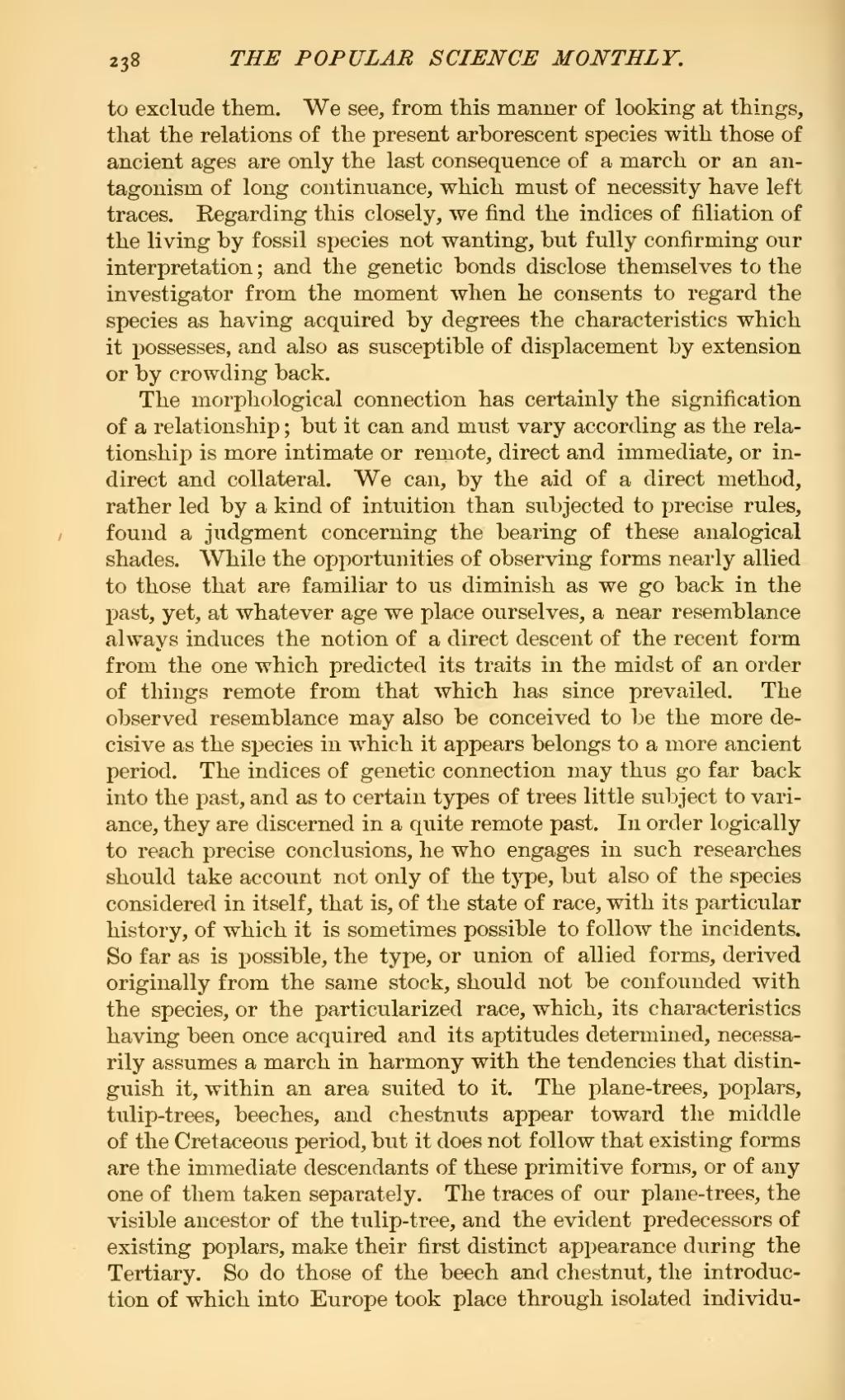to exclude them. We see, from this manner of looking at things, that the relations of the present arborescent species with those of ancient ages are only the last consequence of a march or an antagonism of long continuance, which must of necessity have left traces. Regarding this closely, we find the indices of filiation of the living by fossil species not wanting, but fully confirming our interpretation; and the genetic bonds disclose themselves to the investigator from the moment when he consents to regard the species as having acquired by degrees the characteristics which it possesses, and also as susceptible of displacement by extension or by crowding back.
The morphological connection has certainly the signification of a relationship; but it can and must vary according as the relationship is more intimate or remote, direct and immediate, or indirect and collateral. We can, by the aid of a direct method, rather led by a kind of intuition than subjected to precise rules, found a judgment concerning the bearing of these analogical shades. While the opportunities of observing forms nearly allied to those that are familiar to us diminish as we go back in the past, yet, at whatever age we place ourselves, a near resemblance always induces the notion of a direct descent of the recent form from the one which predicted its traits in the midst of an order of things remote from that which has since prevailed. The observed resemblance may also be conceived to be the more decisive as the species in which it appears belongs to a more ancient period. The indices of genetic connection may thus go far back into the past, and as to certain types of trees little subject to variance, they are discerned in a quite remote past. In order logically to reach precise conclusions, he who engages in such researches should take account not only of the type, but also of the species considered in itself, that is, of the state of race, with its particular history, of which it is sometimes possible to follow the incidents. So far as is possible, the type, or union of allied forms, derived originally from the same stock, should not be confounded with the species, or the particularized race, which, its characteristics having been once acquired and its aptitudes determined, necessarily assumes a march in harmony with the tendencies that distinguish it, within an area suited to it. The plane-trees, poplars, tulip-trees, beeches, and chestnuts appear toward the middle of the Cretaceous period, but it does not follow that existing forms are the immediate descendants of these primitive forms, or of any one of them taken separately. The traces of our plane-trees, the visible ancestor of the tulip-tree, and the evident predecessors of existing poplars, make their first distinct appearance during the Tertiary. So do those of the beech and chestnut, the introduction of which into Europe took place through isolated individu-
